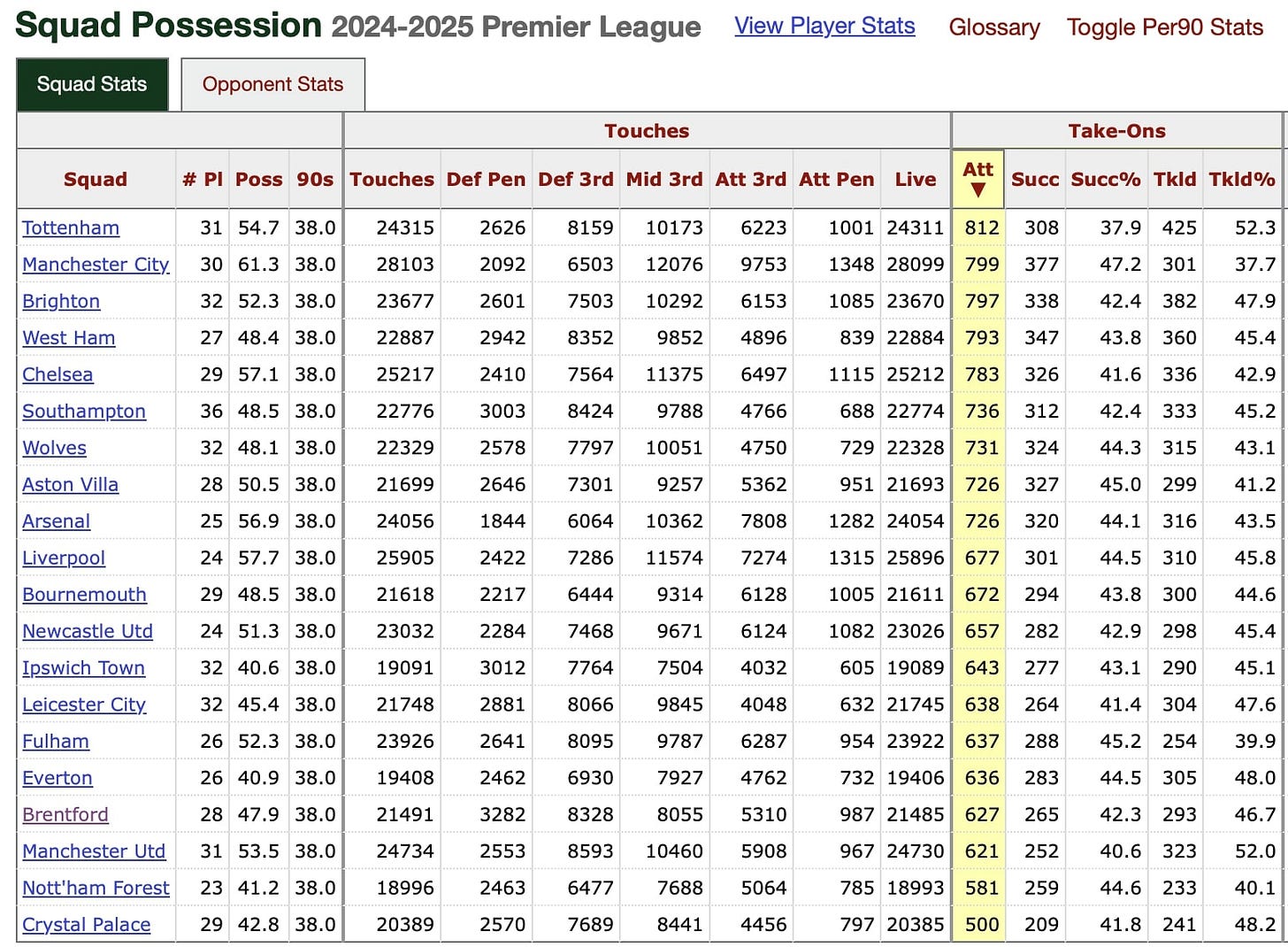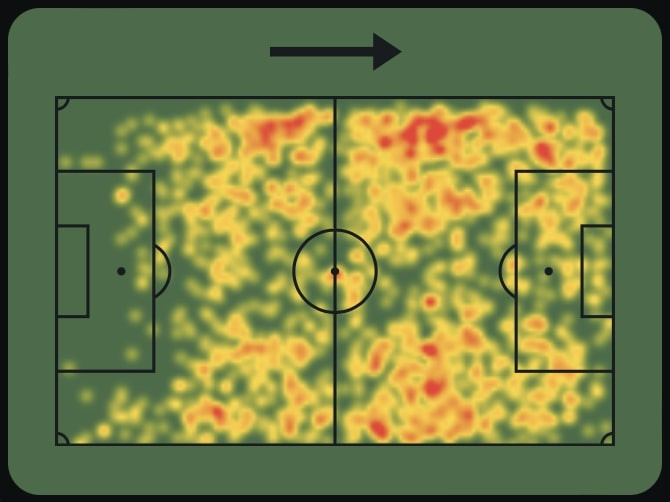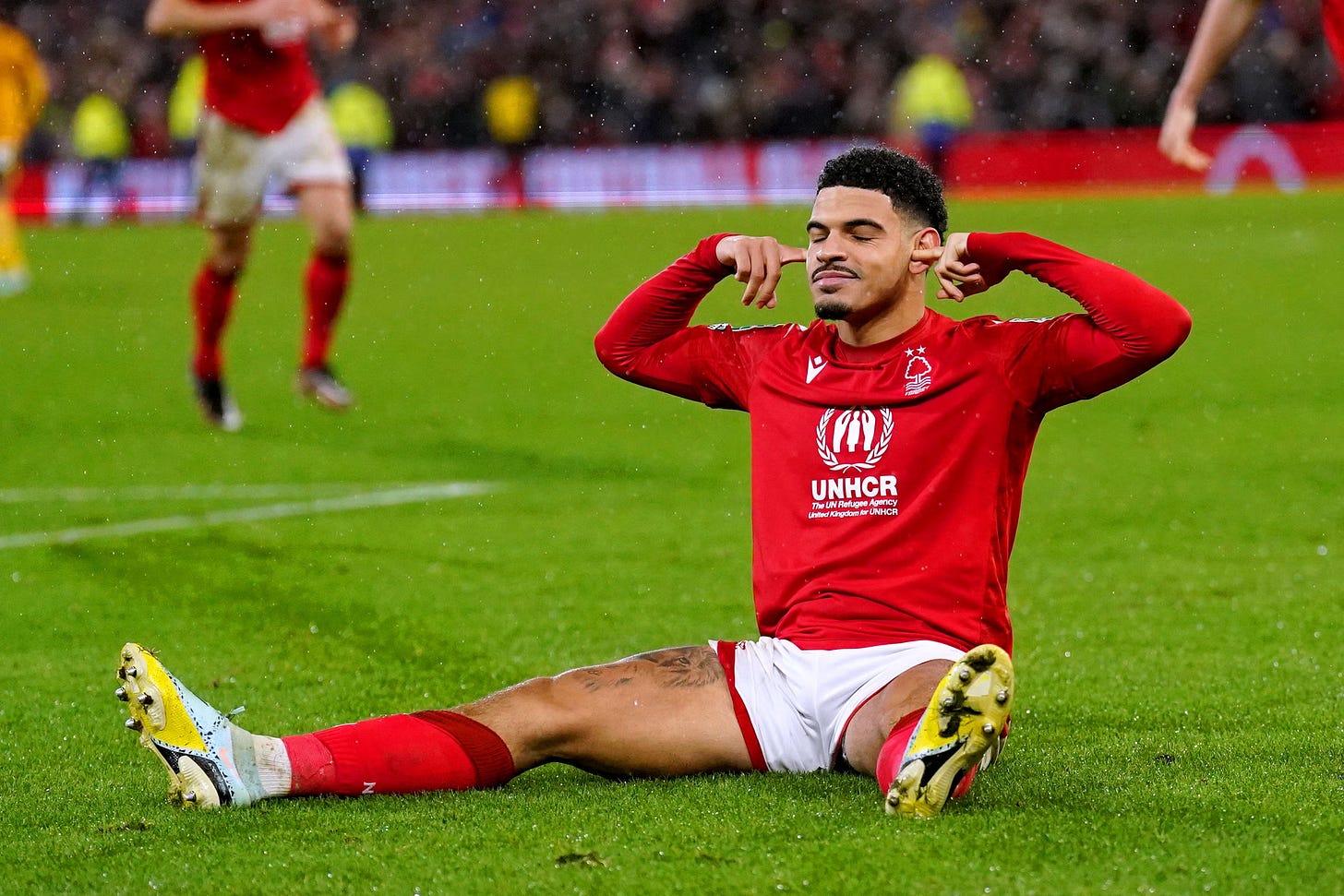How Will Tottenham Setup in 2025/26?
How Kudus and Gibbs-White Could Elevate Spurs.
The inclusion of Mohammed Kudus and Morgan Gibbs-White adds a new dimension to the Tottenham Hotspur team - but how will they fit in Thomas Frank’s new lineup?
Tottenham Hotspur’s recent splurge of signings, with the arrival of Mohammed Kudus and the, seemingly, imminent arrival of Morgan Gibbs-White (‘MGW’ hereafter), may surprise (and may even shock!) avid football fans and Spurs fans alike; to act with such decisiveness, recruiting in positions of strength, is altogether antithetical to the miserly approach of Tottenham Hotspur during Pochettino’s potentate.
And yet, despite this action in the transfer market, it’s not totally clear how these players will fit Thomas Frank’s revamped Spurs.
That is exactly what we will explore here: first, by analysing what Thomas Frank expects from his attacking players; then by examining the traits of Kudus and MGW; and finally, by speculating on Spurs’ likely formation for the 2025/26 season.
What Does Frank Want From His Attackers?
Thomas Frank orders his teams through a set of distinctive principles.
Pragmatism is one such principle. Frank has always been flexible, often switching between a back-4 formation for weaker opposition and a back-3 formation for stronger opposition. This pragmatism in tactical formations extends to the players he likes to employ. The most obvious example of this is Yoane Wissa. Wissa, in his stint at Brentford, has been required to play all along the front 3, depending on the demands of the situation. Even Bryan Mbeumo, thought of as a traditional left-winger in the same vein of Mohamed Salah, has been required to play on the left and right wing.
Attacking players, in Frank’s system, are expected to retain this positional flexibility.
How Can Frank Improve Tottenham Hotspurs’ Attacking Weaknesses?
Frank must also remedy some of Spurs’ attacking woes from last season.
In the 2024/25 campaign, Spurs were notably poor in ‘take-ons’ - a metric that quantifies how often an attacking player attempts to dribble past a defender.
Let’s take a look at the numbers; Spurs attempted the most take-ons in the league last season:
Number of tempted take-ons
Yet despite this, they had the lowest take-on success rate in the league:
Percentage of take-ons completed successfully
When considering attacking threats, therefore, Frank needs a player who is effective at beating his man; this, combined with the section above on attacking flexibility, fortuitously leads us to why Spurs signed Kudus.
What Does Kudus Add to the Spurs Attack?
The following image, Kudus’ 2024/25 heatmap, illustrates his positional flexibility, with a slight preference for the left flank.
Kudus’ 2024/25 heatmap
Like Wissa at Brentford under Frank, having an attacker who can play anywhere along the front-3, as well as in an attacking midfielder role, makes Kudus an ideal fit. He offers the kind of positional fluidity that Frank values - and, in a Spurs team that last year was blighted by injuries, such flexibility is essential.
Furthermore, as our analysis has shown, Spurs clearly need a player that is able to beat players one-on-one; fortunately, Kudus excels in this area, ranking in the top 97% percentile among similar players for successful take-ons:
Kudus Scouting Report
And so, whether Kudus plays off the left, right, or maybe even centrally matters little: he’s so adaptable that he can play anywhere across the front-3. (That said, I imagine that he’ll be played off the right, in place of Brennan Johnson.)
Let’s turn to MGW, now.
What Does Morgan Gibbs-White Add to the Spurs Attack?
Quite simply: his versatility.
Let’s explore that.
Firstly, much like Kudus - and consistently with Frank’s usage of flexible attacking players - MGW can also play in multiple positions: either as a ‘10’ (his usual position) or in the deeper ‘8’.
Secondly, MGW is never really injured: playing and starting 34 games in the Premier League last year; his availability, therefore, can help mitigate Spurs’ terrible injury record last year.
Thirdly, his creativity - as the focal point of Nottingham Forest’s attack and one of the main reasons they finished so highly in the league - is well known.
Fourthly, an underrated but important aspect of MGW’s game is his physicality - a trait that, according to reports, attracted interest from Manchester City - a Man. City who have, in recent history, tended towards tall and strong players; his strength and aerial threat (ranking in the top 93 percentile for similar players) adds a physical presence to the Spurs midfield that generally lacks the physicality that the modern Premier League requires.
Fifthly, MGW’s tenacity and work-rate. He consistently ranks highly in defensive metrics due to his commitment to tracking back, unafraid to put in a defensive shift; he resides in the top 88 percentile for similar players when it comes to interceptions.
All these qualities come together and are perfectly represented in these sets of statistics:
MGW’s Goal and Shot Creation Stats
Take a look at the two statistics marked with ‘Defensive Action’ - one in the middle of the table, the other at the bottom. Both are related. They show how effectively a player’s defensive actions lead to, respectively, a shot-creating action (middle) and a goal (bottom).
The two stats above describe the following state of play: MGW makes defensive actions through a tackle or interception, normally within the midfield third, then moves swiftly, progressing the ball up the field, turning defensive precarities into offensive threats. He doesn’t merely do this - he excels at this: ranking in the top 94 and 91 percentile for turning defensive actions into attacking threats. This dynamism - his defensive capabilities, physical prowess, creativity, ability to progress the ball, availability, and positional adaptability - perfectly paint the picture of a multifaceted midfielder. And this dynamism allows him to play either as the ‘10’ or the ‘8’.
This is why Spurs are so determined to sign him.











